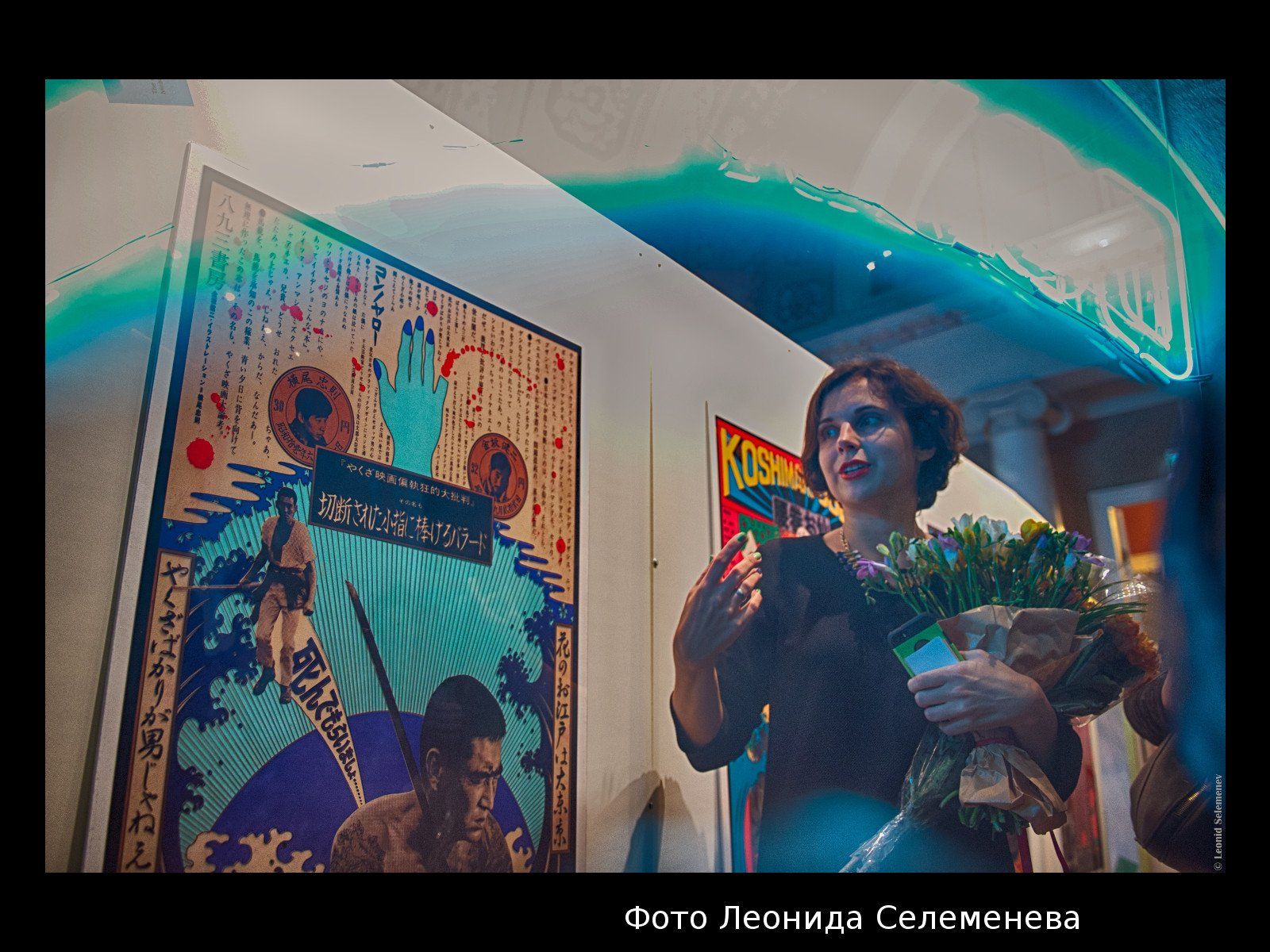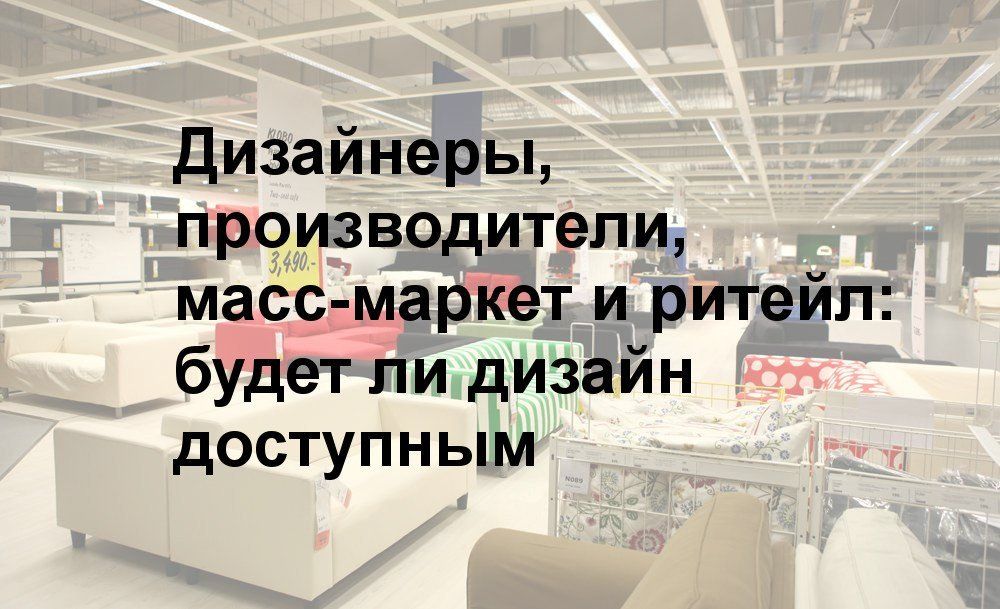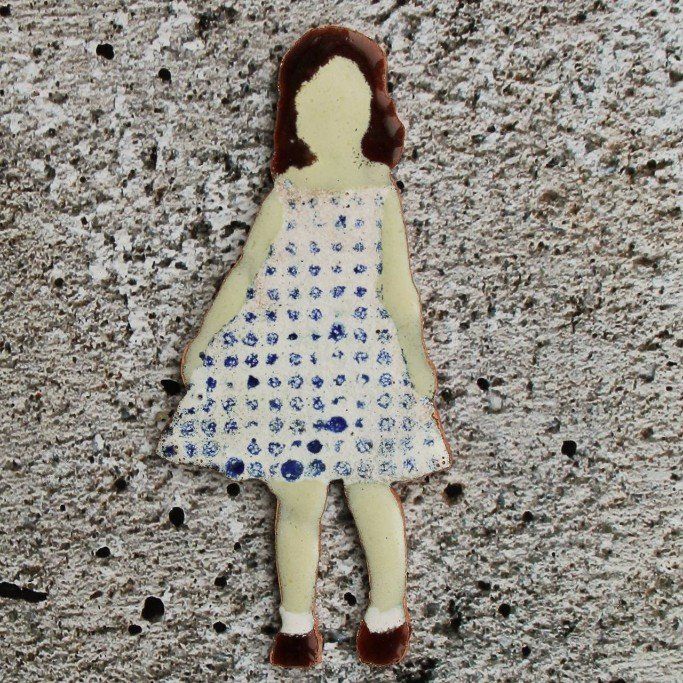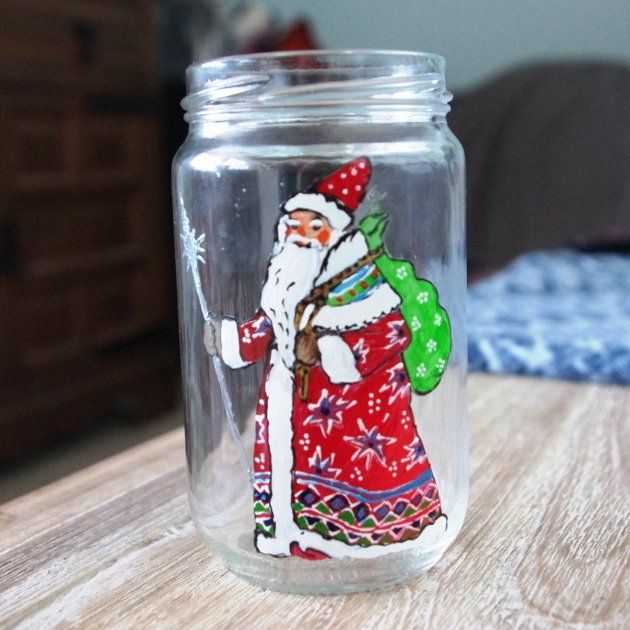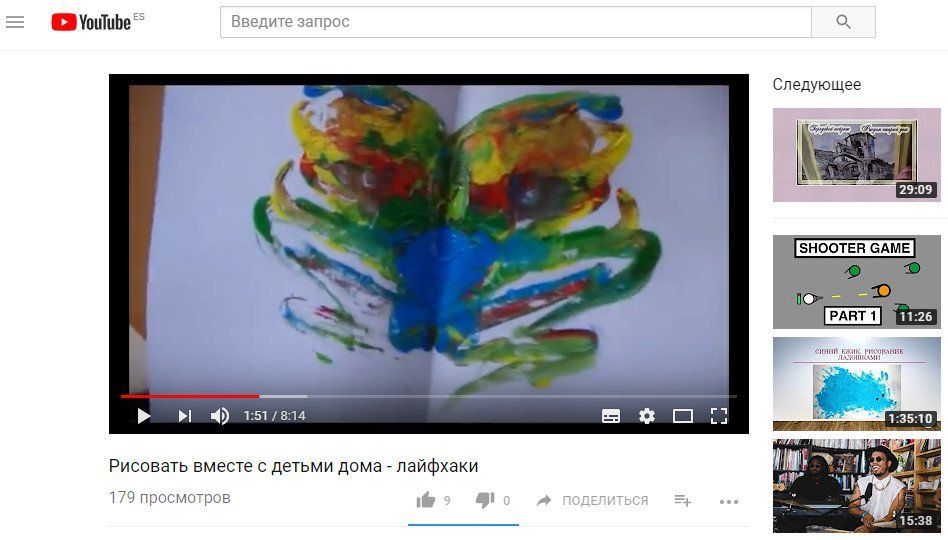How to: Painting on Glass with the Russian Santa
- By Diana Widstrom
- •
- 17 Nov, 2017
- •
Take an old empty jar and turn it into a Christmas decoration? Why not!
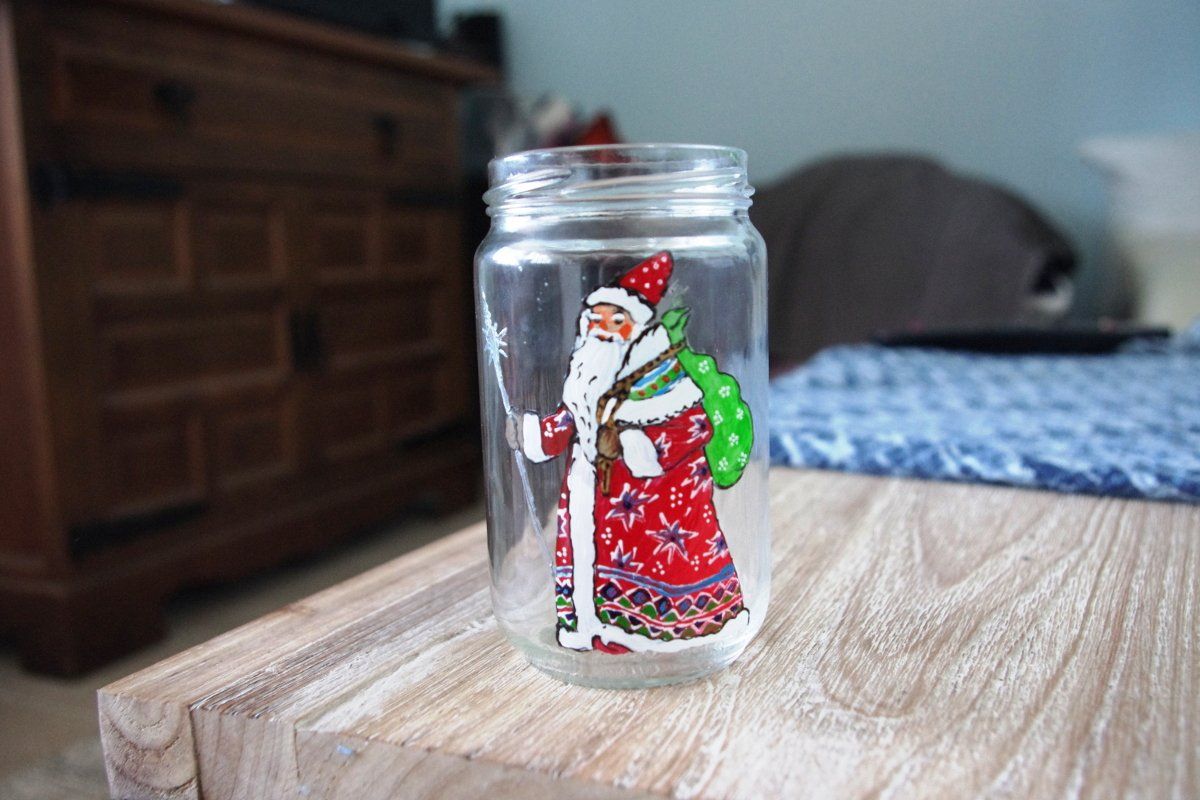
Not to mix up stained-glass painting and acrylic painting on glass, we are about to learn the basics of the latter. The paint is heavier, less transparent, and it will not leak from the working surface. It's almost like drawing on paper or canvas, so anyone can try. Once managed, this technique gives you a lot of ideas to work with: Christmas toys and decorations, vases, or just ordinary jars that you can work with to create unique masterpieces.
There are several paints for glass and ceramics, some require finishing by burning in a special high temperature oven. The easier ones are "cold", i.e. they are ready after drying. Check which ones are available in your local crafts shop.
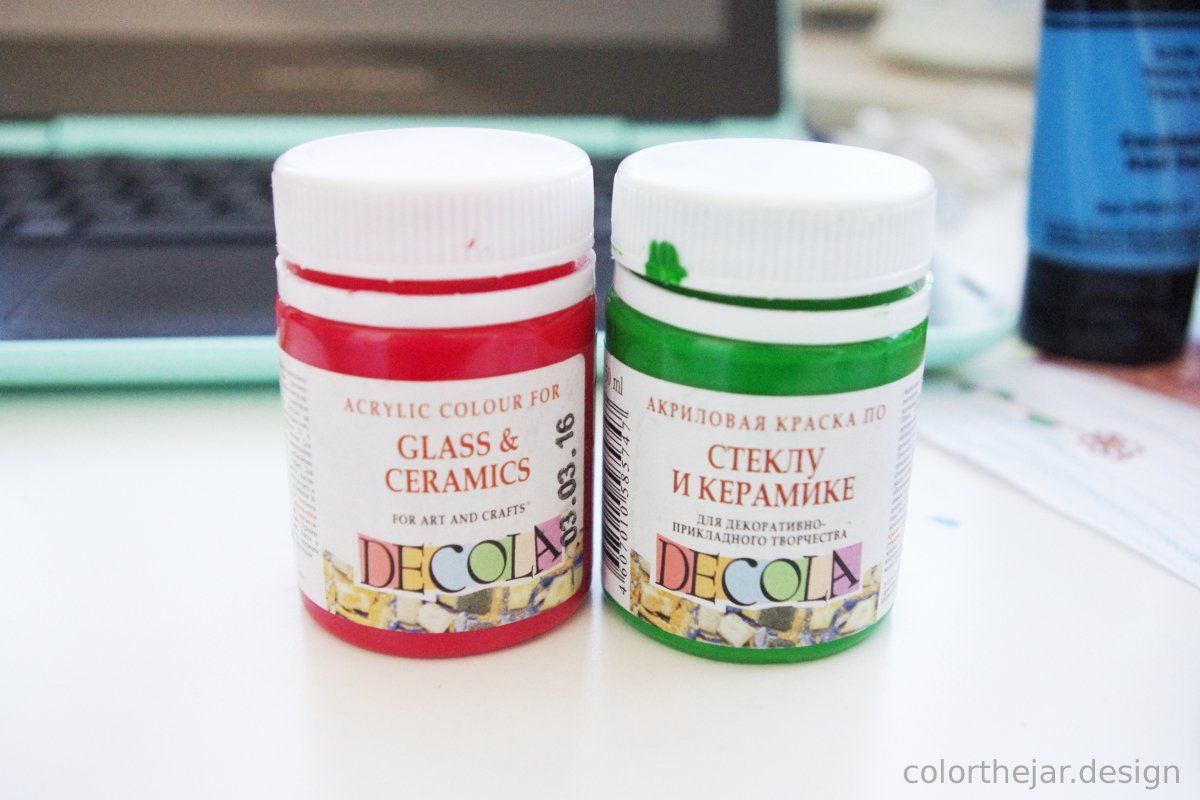
This paint is produced in Russia, but can be replaced by ordinary acrylic paint for glass and ceramics. It covers differently those two surfaces - transparent and glossy on glass, solid and tight on ceramics. But nothing can win over the transparency and the light-bearing qualities of glass that allows you to use two sides of the bottle or play with the natural light when observing the painting.
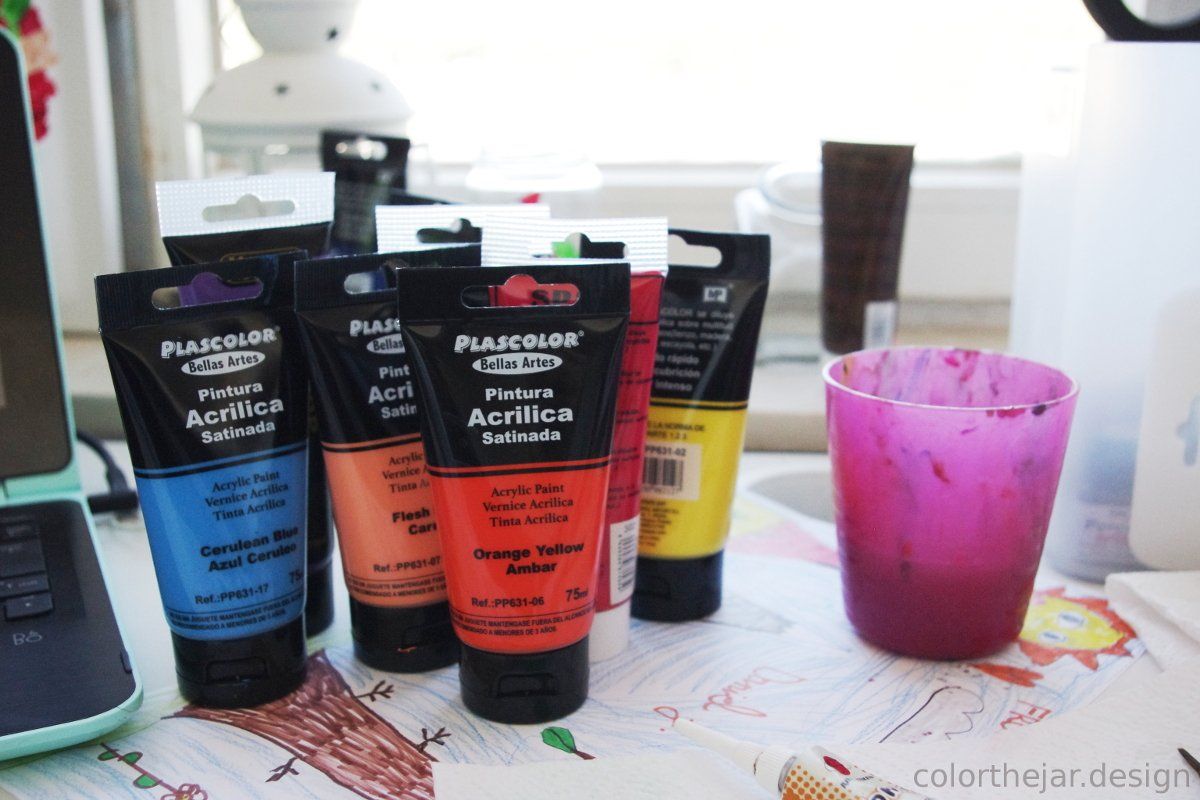
This paint, on the contrary, is distributed in Spain and produced in China. And it's the ordinary acrylic paint that you can use for canvases. It's also good for painting on glass, but the density is different so it gives a textured and matte effect. Sometimes it requires a little more attention to be fixed after drying.
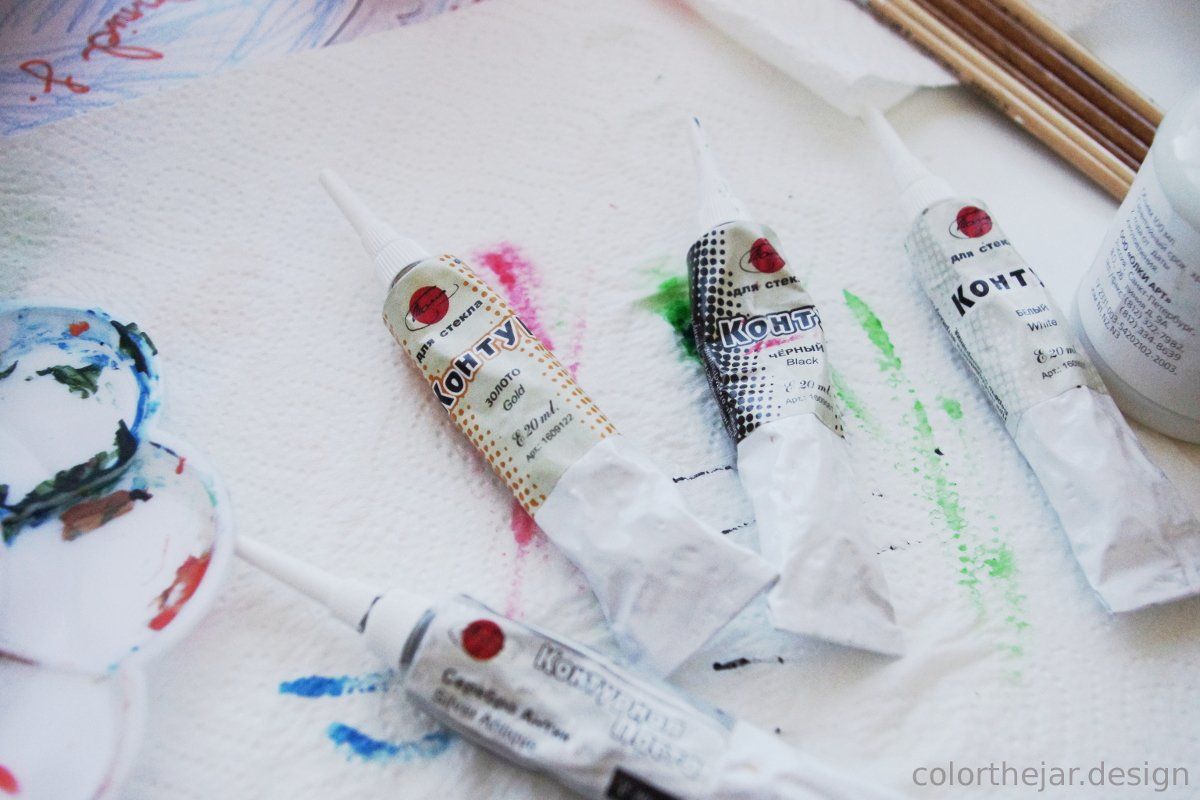
The contour paint is the basis. Always good to have it in black, but white, silver and gold is also very useful for Christmas decorations.
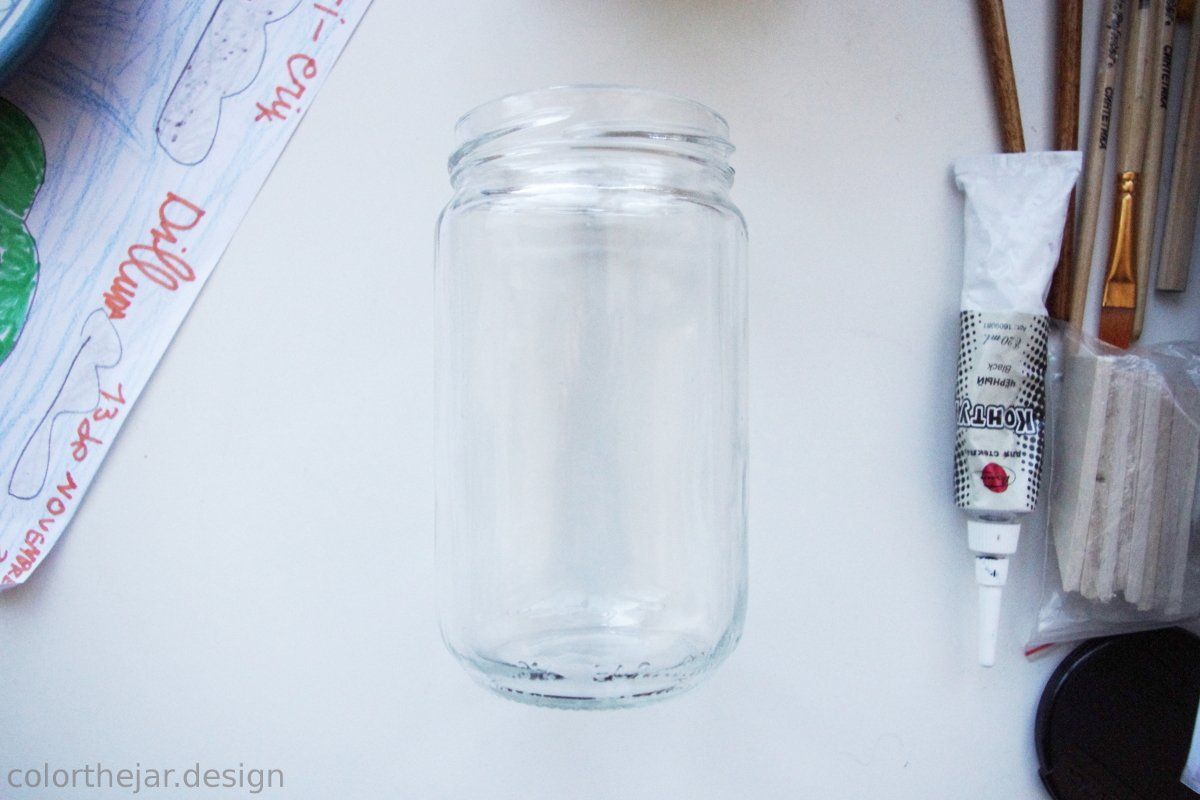
Find any glassware that begs you for second life. (Color the Jar supports recycling!)

Let's start with the contour drawing - just the outline, no details for now. Some painters use ready printed images. The drawing turns to be more precise and clean, but working without a stencil is much more fun. Our inspiration here is a Soviet-time postcard. Ded Moroz is similar to Santa Claus but he comes on the New Year's night and normally wears cool outfits :) Soviet postcards were illustrated by well-known artists, so that's a fine source of inspiration. You can still chose Santa if you have more luck with him.
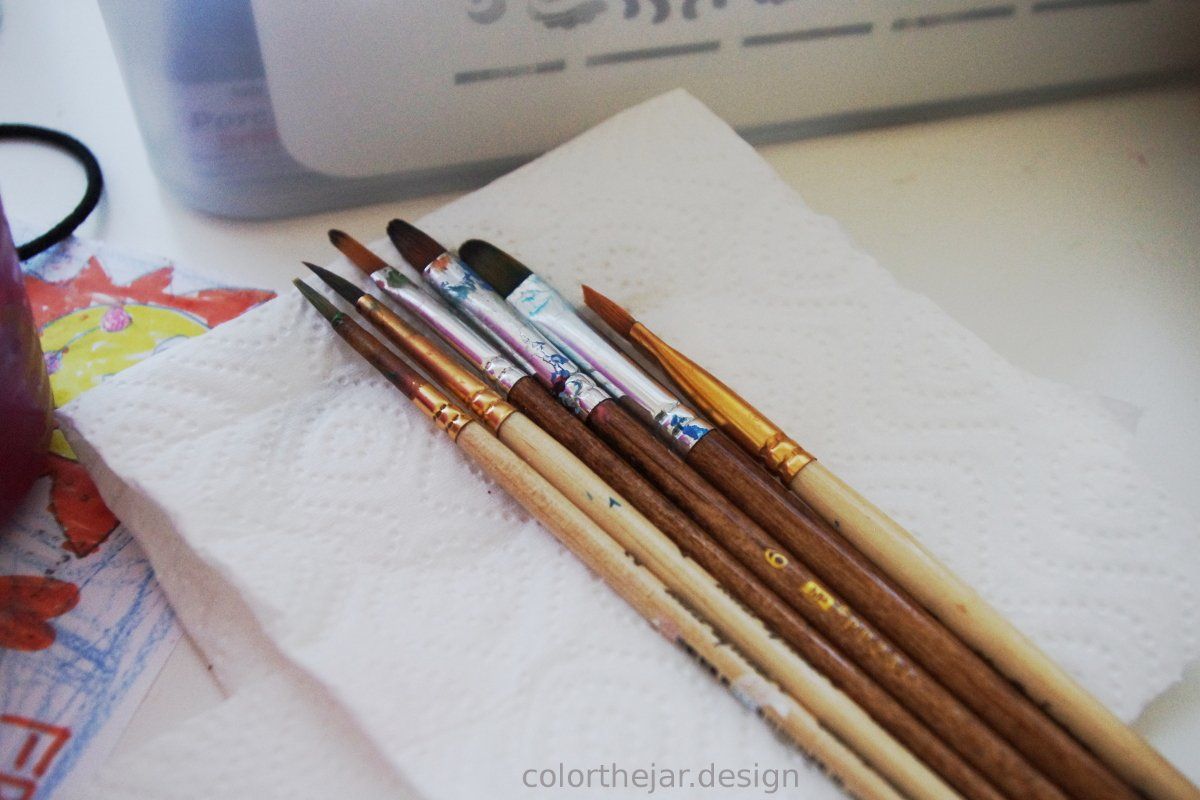
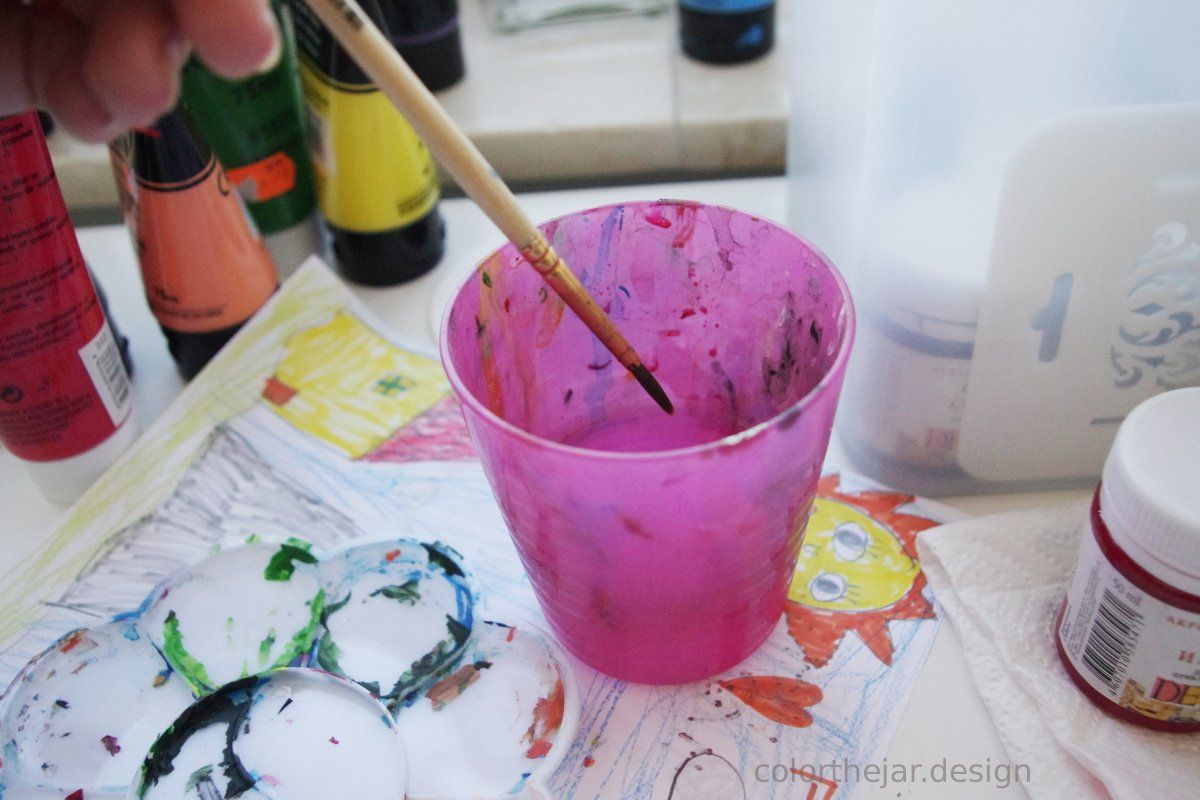
When the contour is ready, take the basic colors for your drawing. In our case red and white are the major ones. We can fill in the color confidently, although later we would need to cover up the details. That's not the right thing to do when you work with ceramics, but with glass it's absolutely appropriate.
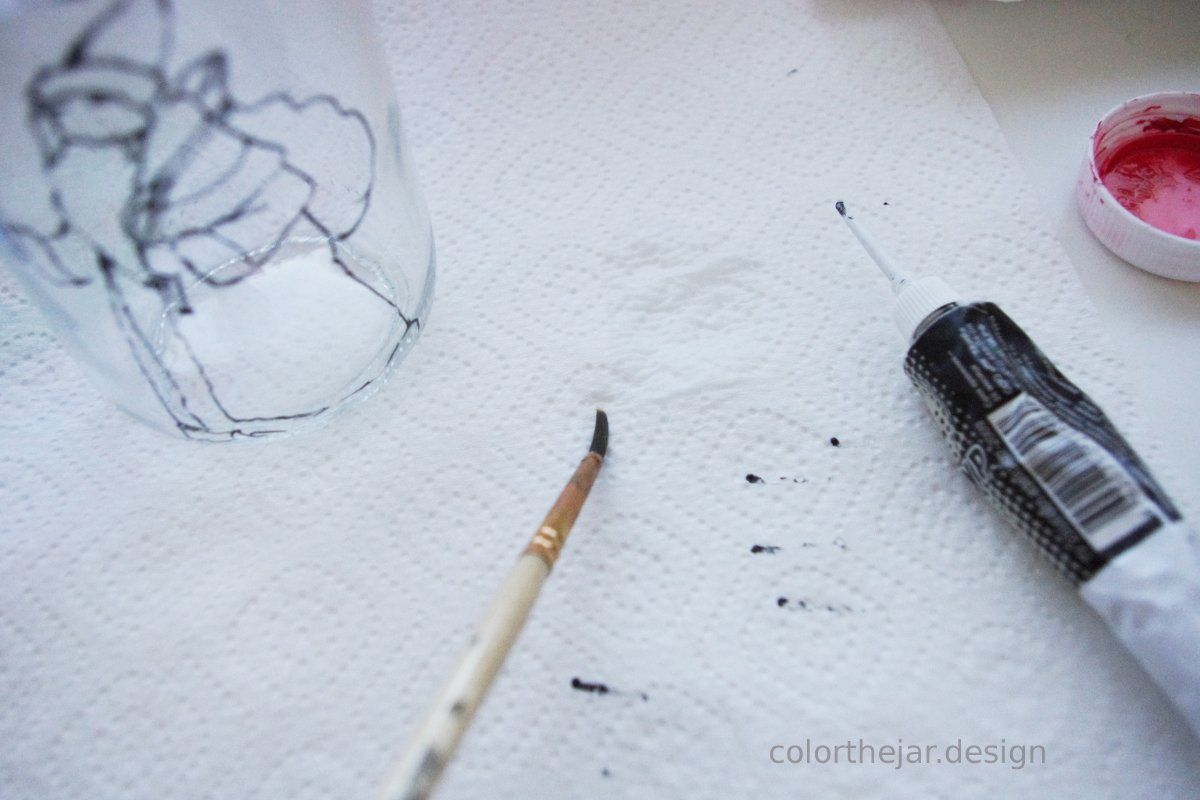
Most of the special acrylic paints for glass are semi-transparent. Colors like our red should be applied in two layers. Here comes a trick: either you put both layers right away, before the paint gets dry, or wait until it's firmly dried. Otherwise the brush will scratch the lower layer.
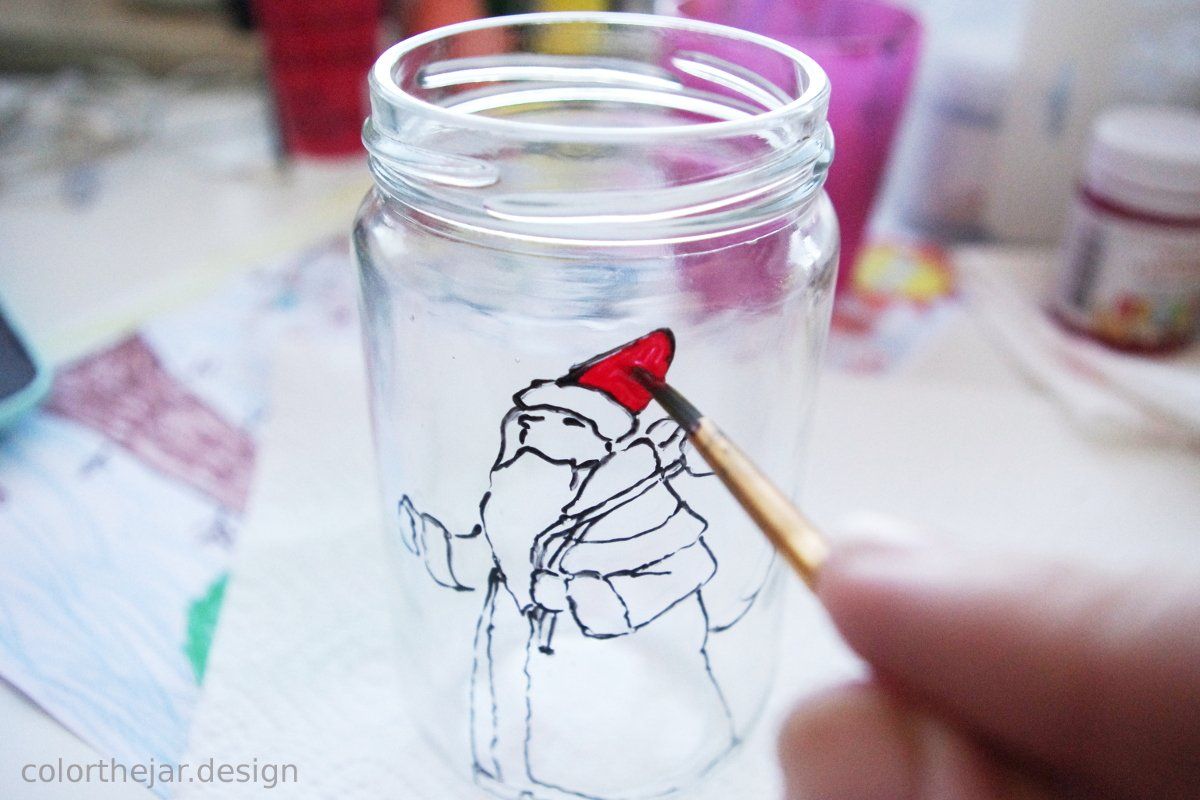
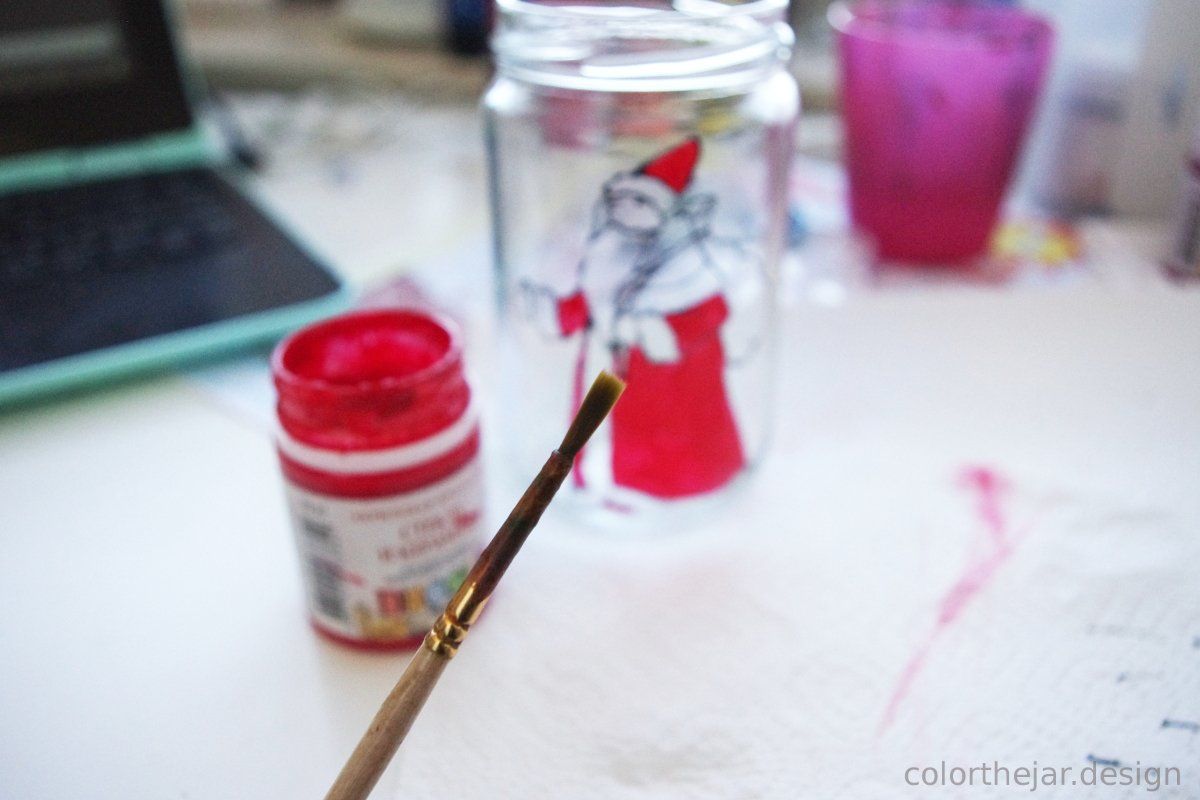
We use a straight bristle brush. At least it looks like that when wet!
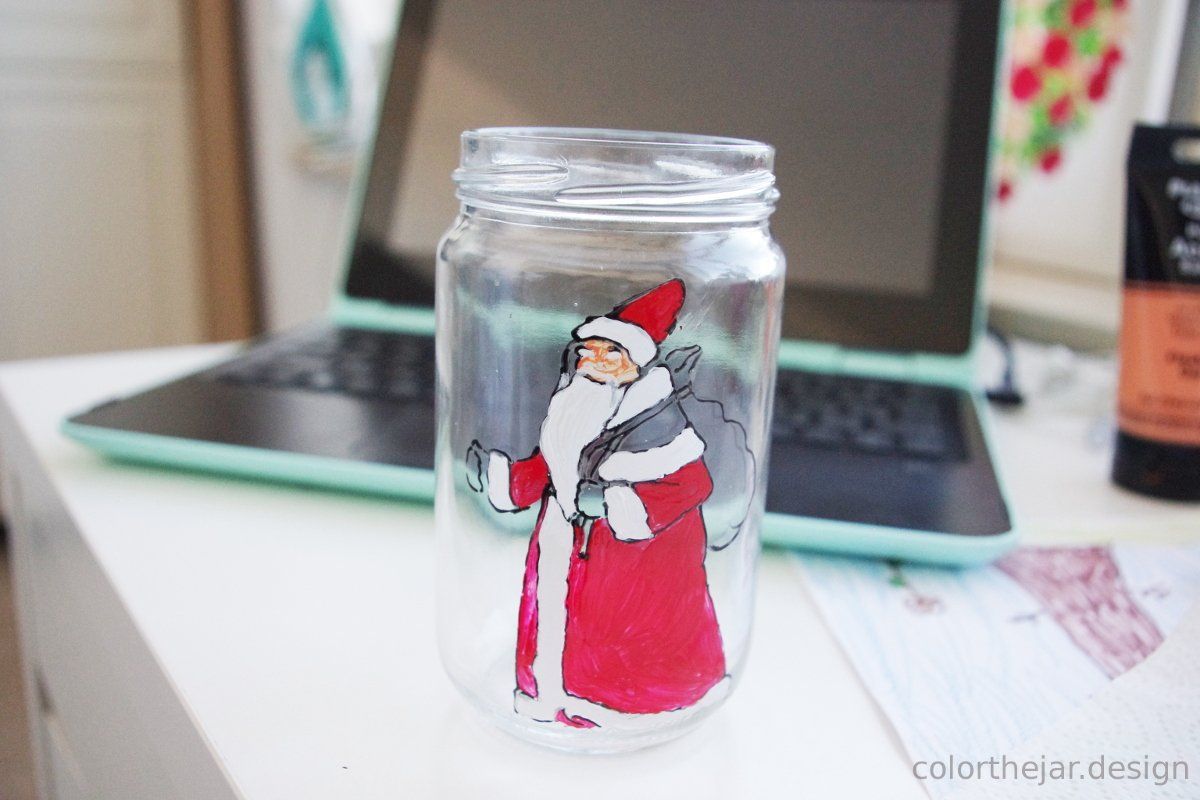
For the second basic color, white, we use ordinary acrylic paint. The texture and the brush strokes are clearly visible, but for the Russian Santa's beard and fur on the coat that's exactly what we need. If you need a more glossy color, but you don't have the special glass paint, use the paint thinner which is also helpful when mixing colors.
Some colors are almost transparent, and then you need to take more with a brush and apply two or more layers. That's what we did with the skin tone.

Details make you happy. Small lines work fine with contour paint. Why not use something vivid, like this golden color.
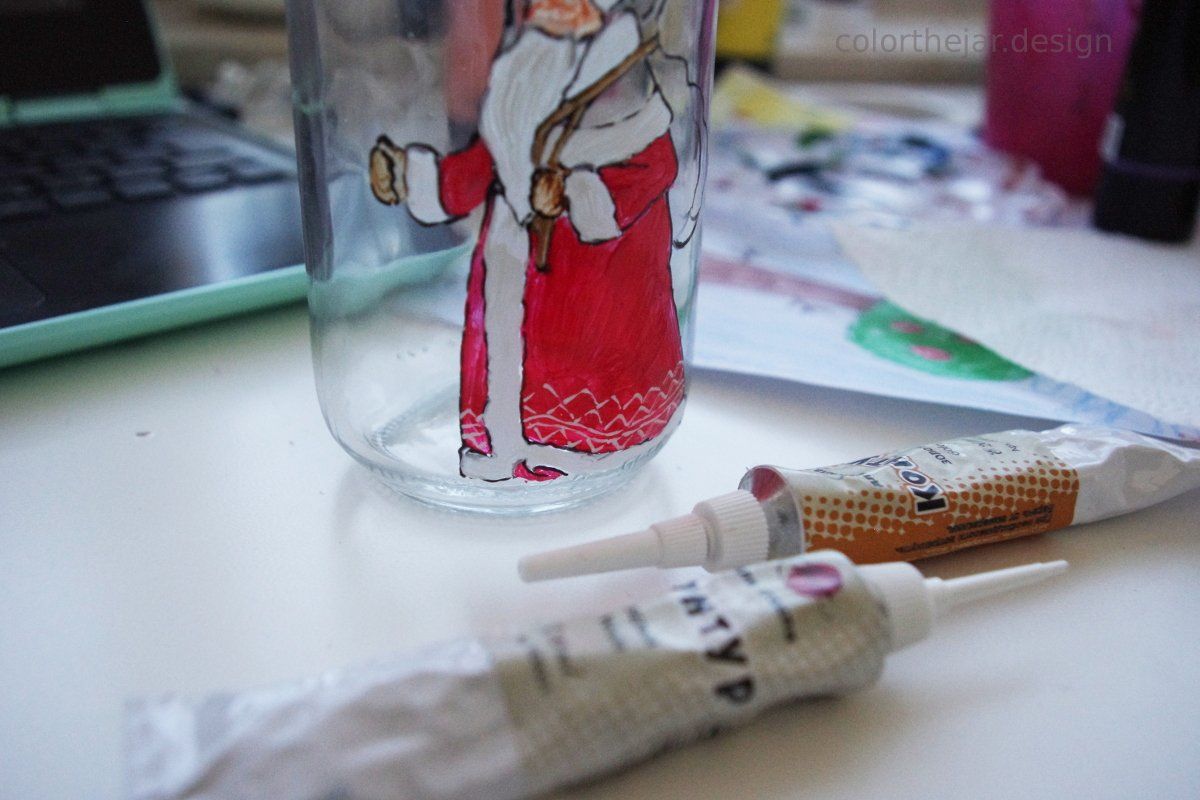
Now we start the cover-up with white contour. Ordinary white paint also works fine. Actually the contour gives a relief and makes your drawing look like a Christmas cookie. For more delicate images use very thin brushes and just a little of ordinary color.
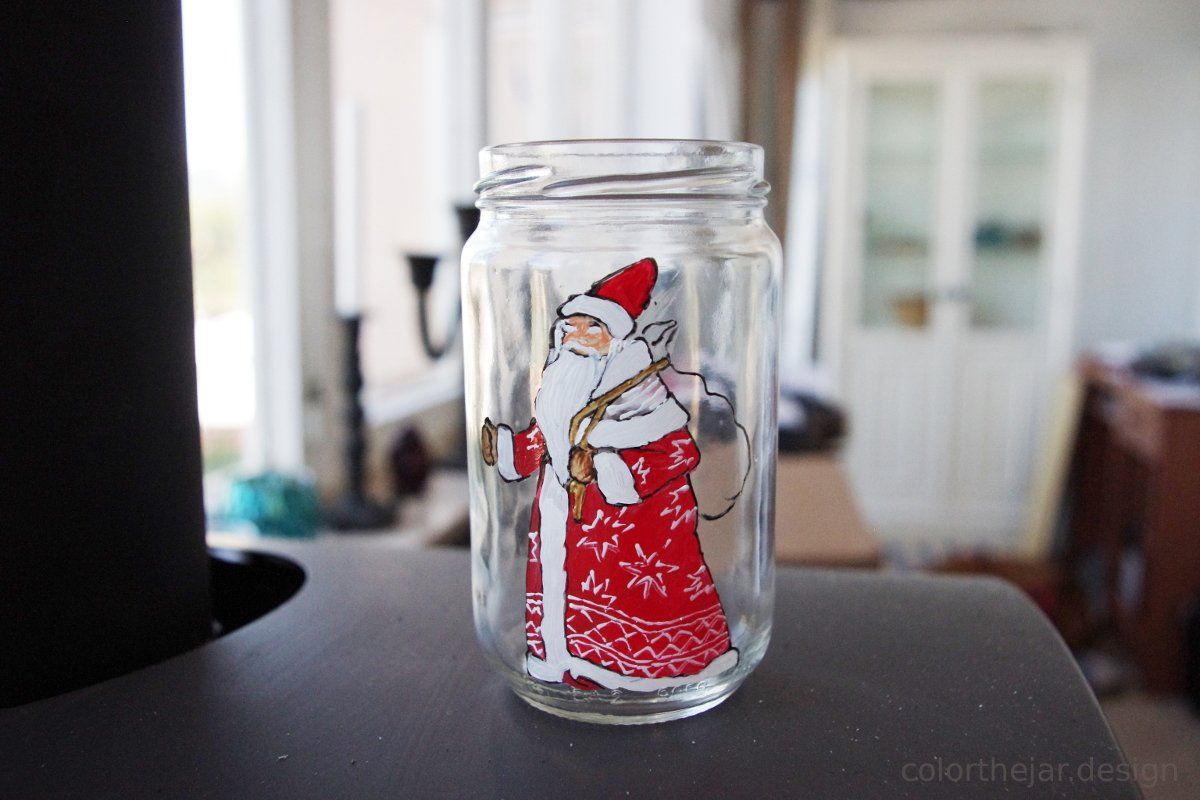
Did I already say that the details is the most interesting part?
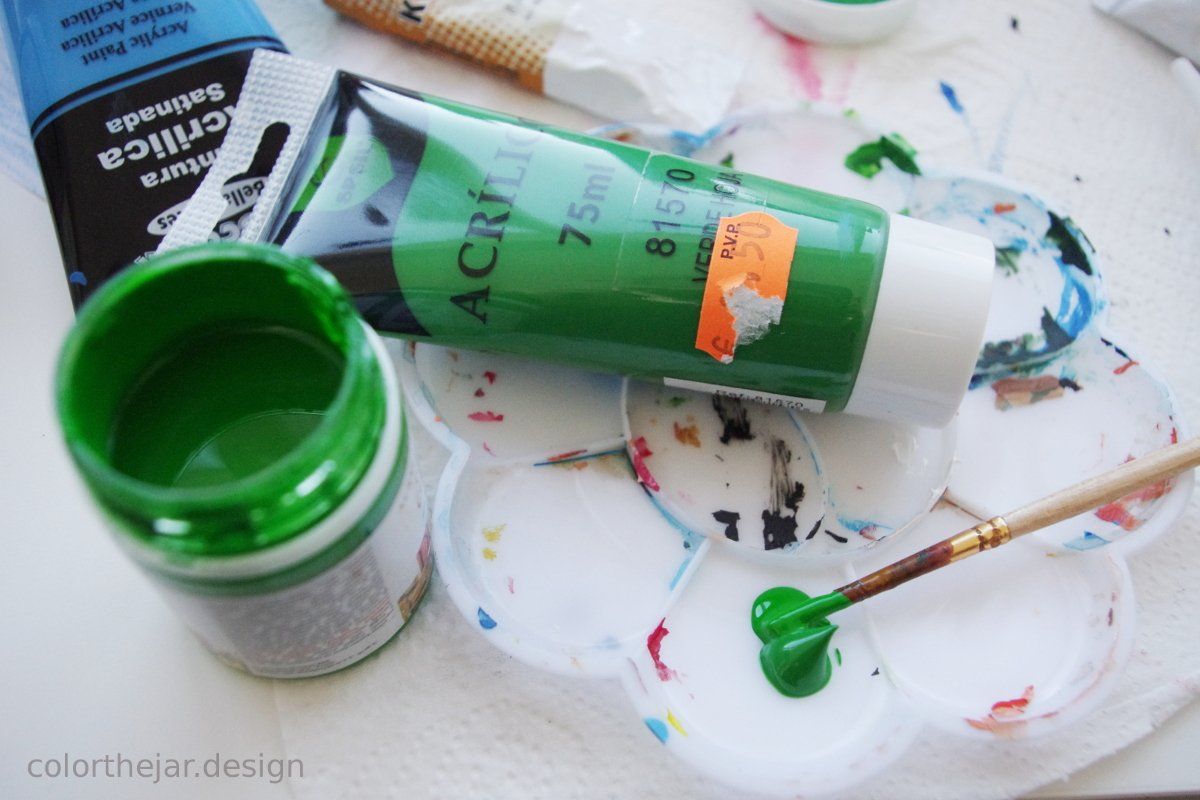
Mix two types of paint to save the qualities of both. Then we have a matte green which still bears a lot of light.
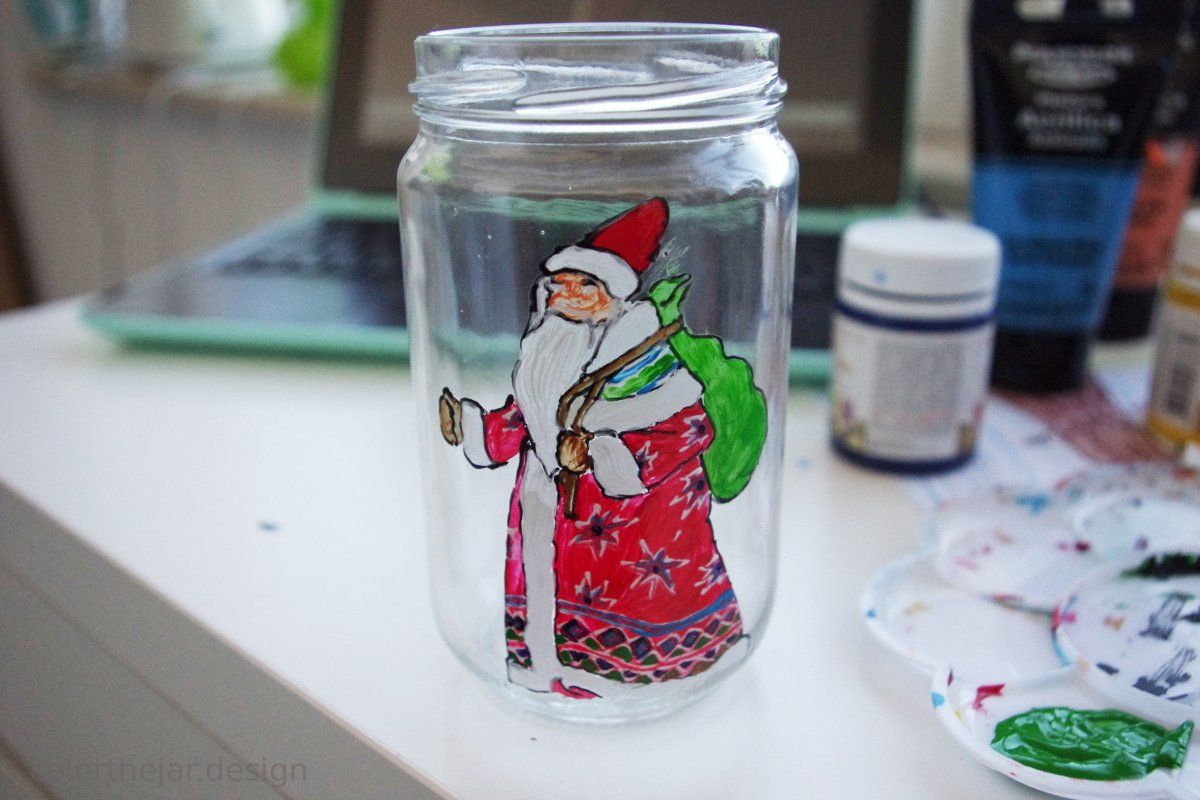
Experiment with the details but try not to make mistakes at this time, otherwise you need to re-color the background too.
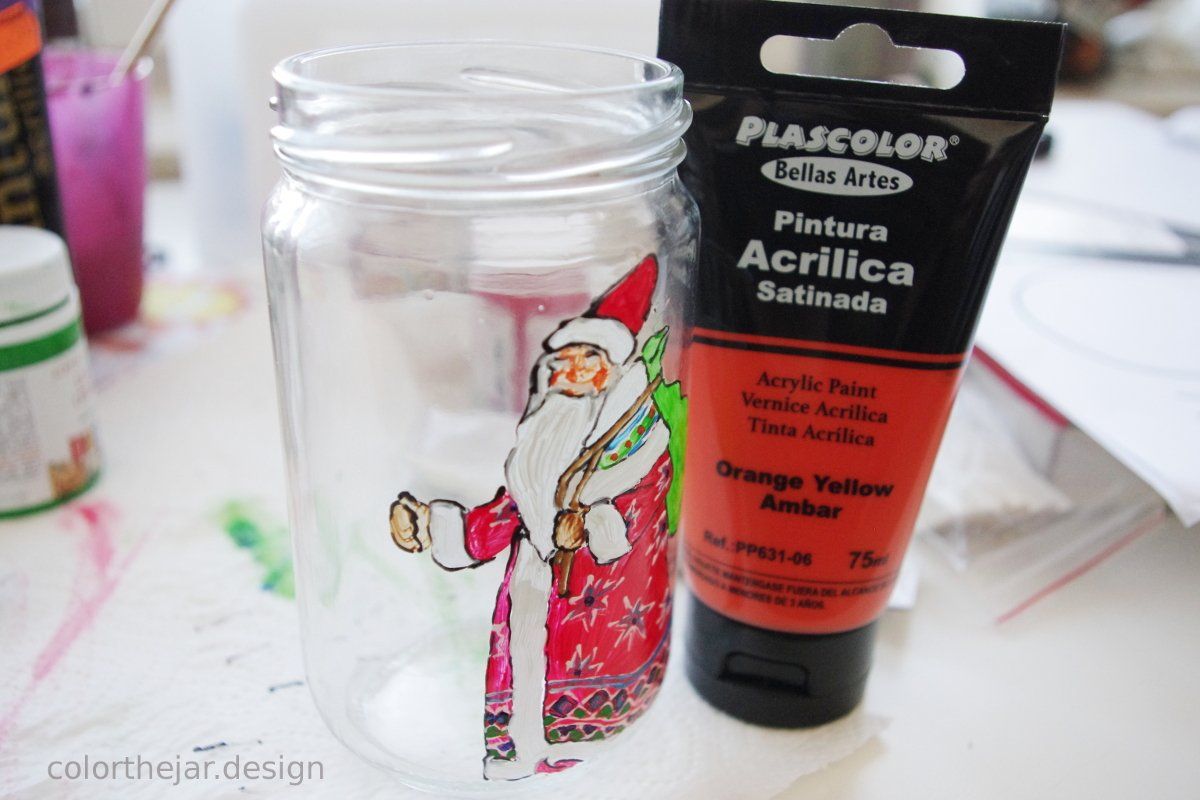
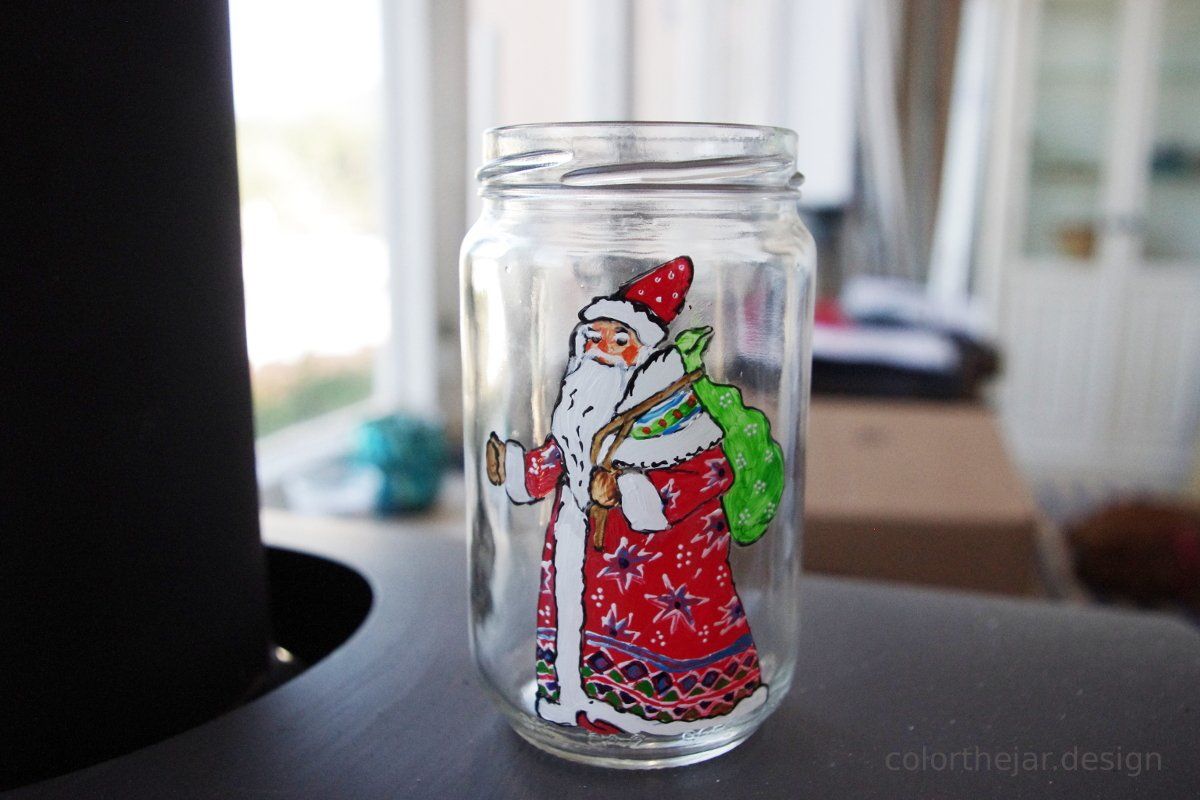
This long stick is very important for Ded Moroz, as it's of course magical and he can also freeze anyone with it. Fatality!
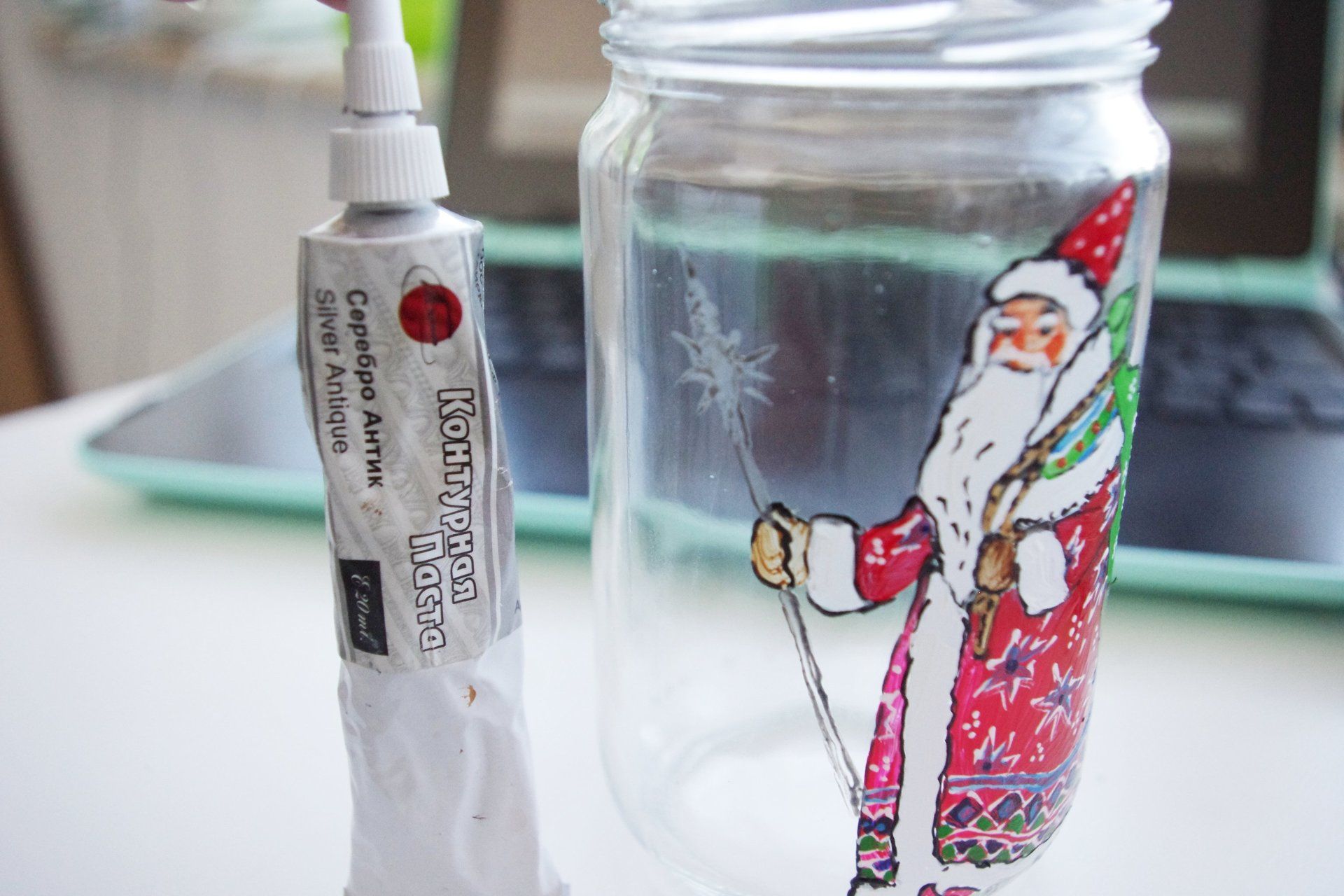
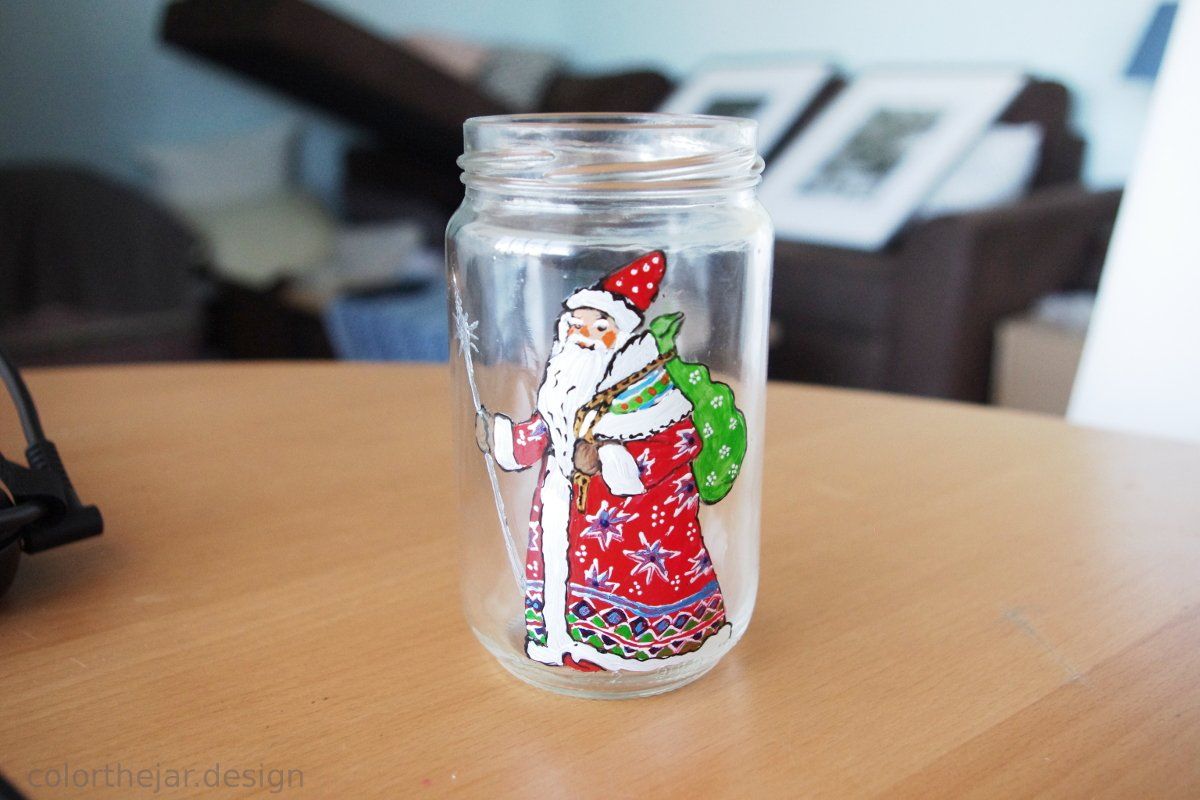
Here we are, our Ded Moroz is ready to serve the good. Use it for candles, put in candy, or - even better - Christmas lights. I didn't even try to search for my Christmas lights in the basement, but just follow our instagram and you will see the combination very soon!
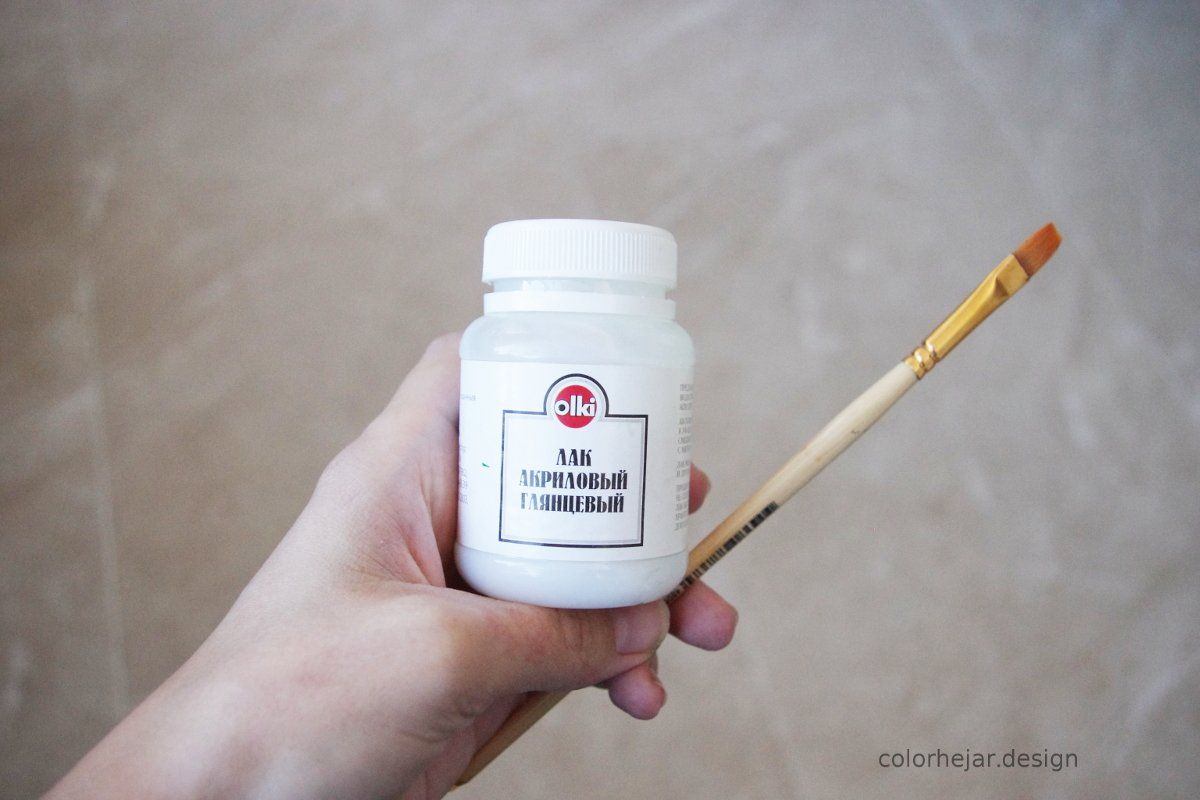
Okay, the most important is to fix your painting. This bottle is a simple acrylic lacquer. Apply it with a similar paintbrush after the paint is absolutely dry (wait one hour to be sure). Some paints can be also dried in the oven at the temperature of about 100 degrees C for 30 minutes, but check with your manufacturer first. A layer of lacquer is enough to keep the painting safe and colorful for many years to go. Just don't put the glassware in the dishwasher and don't use abrasive materials. I normally wash the jar after the lacquer is dry just to make sure all the colors are in its place.





